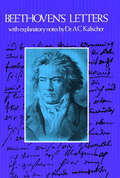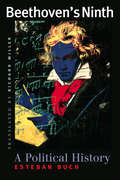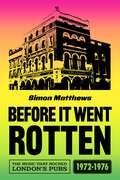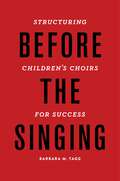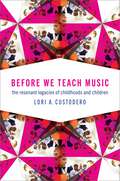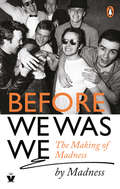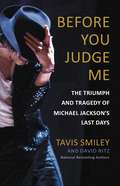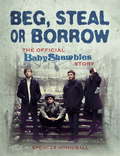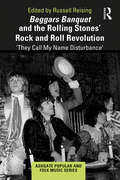- Table View
- List View
Beethoven's Letters
by Ludwig Van BeethovenLudwig van Beethoven (1770-1827), the protagonist of freedom for music, disentangled music from the control of the ruling class. In publishing his music and writing for the rising classes, Beethoven claimed freedom and expressed the emotions of the new rulers, the artists. The Eroica, Fidelio, and the piano works express the emotions of the new rulers -- the intense love, the need for companionship of people, the forces that conspired to defeat the artist, and the strength and superiority of the artist in overcoming the weaknesses. The letters of Beethoven are the principal nonmusical expression of his personality in its relationship with the world of his time.In what he called the "dry letters of the alphabet," Beethoven depicted his fears, his loves, and his friendly relations: his fears of deafness and of corrupted texts by pirating printers; his loves, Bettina Brentano and Giulietta Guicciardi; and his friendly relations with Baron Zmeskall, Frau Nannette Streicher, and the music publishers Steiner and Company. He praises the poetry of Goethe and Schiller but condemns Goethe for his obeisance toward royalty. He solicits help during his perpetual trouble with his health and with his servants. He castigates publishers, sets prices for his works, and calculates letters of dedication. He expresses his love for his nephew, Carl, but documents the trouble that Carl was causing him by taking up his precious time. And although Beethoven liked to decorate the letters with musical openings and closings and an occasional song to the receiver, he increasingly signed his letters, "In haste."The 457 letters collected here are the most important of the letters of the spirit that was to shape and move a century. Explanatory notes comment upon works, on persons mentioned, and on the puns of which Beethoven was fond. The letters chronicle his business, his needs, his humor and bitterness, and his philosophy. They will give many insights into Beethoven's methods, his influences, his moods, and the conditions under which the master worked.
Beethoven's Ninth: A Political History
by Esteban BuchWho hasn't been stirred by the strains of Beethoven's Ninth Symphony? That's a good question, claims Esteban Buch. German nationalists and French republicans, communists and Catholics have all, in the course of history, embraced the piece. It was performed under the direction of Leonard Bernstein at a concert to mark the fall of the Berlin Wall, yet it also serves as a ghastly and ironic leitmotif in Stanley Kubrick's A Clockwork Orange. Hitler celebrated his birthdays with it, and the government of Rhodesia made it their anthem. And played in German concentration camps by the imprisoned, it also figured prominently at Mitterand's 1981 investiture. In his remarkable history of one of the most popular symphonic works of the modern period, Buch traces such complex and contradictory uses—and abuses—of Beethoven's Ninth Symphony since its premier in 1824. Buch shows that Beethoven consciously drew on the tradition of European political music, with its mix of sacred and profane, military and religious themes, when he composed his symphony. But while Beethoven obviously had his own political aspirations for the piece—he wanted it to make a statement about ideal power—he could not have had any idea of the antithetical political uses, nationalist and universalist, to which the Ninth Symphony has been put since its creation. Buch shows us how the symphony has been "deployed" throughout nearly two centuries, and in the course of this exploration offers what was described by one French reviewer as "a fundamental examination of the moral value of art." Sensitive and fascinating, this account of the tangled political existence of a symphony is a rare book that shows the life of an artwork through time, shifted and realigned with the currents of history.
Beethoven's Ninth: A Political History
by Esteban BuchWho hasn't been stirred by the strains of Beethoven's Ninth Symphony? That's a good question, claims Esteban Buch. German nationalists and French republicans, communists and Catholics have all, in the course of history, embraced the piece. It was performed under the direction of Leonard Bernstein at a concert to mark the fall of the Berlin Wall, yet it also serves as a ghastly and ironic leitmotif in Stanley Kubrick's A Clockwork Orange. Hitler celebrated his birthdays with it, and the government of Rhodesia made it their anthem. And played in German concentration camps by the imprisoned, it also figured prominently at Mitterand's 1981 investiture. In his remarkable history of one of the most popular symphonic works of the modern period, Buch traces such complex and contradictory uses—and abuses—of Beethoven's Ninth Symphony since its premier in 1824. Buch shows that Beethoven consciously drew on the tradition of European political music, with its mix of sacred and profane, military and religious themes, when he composed his symphony. But while Beethoven obviously had his own political aspirations for the piece—he wanted it to make a statement about ideal power—he could not have had any idea of the antithetical political uses, nationalist and universalist, to which the Ninth Symphony has been put since its creation. Buch shows us how the symphony has been "deployed" throughout nearly two centuries, and in the course of this exploration offers what was described by one French reviewer as "a fundamental examination of the moral value of art." Sensitive and fascinating, this account of the tangled political existence of a symphony is a rare book that shows the life of an artwork through time, shifted and realigned with the currents of history.
Beethoven's Ninth: A Political History
by Esteban BuchWho hasn't been stirred by the strains of Beethoven's Ninth Symphony? That's a good question, claims Esteban Buch. German nationalists and French republicans, communists and Catholics have all, in the course of history, embraced the piece. It was performed under the direction of Leonard Bernstein at a concert to mark the fall of the Berlin Wall, yet it also serves as a ghastly and ironic leitmotif in Stanley Kubrick's A Clockwork Orange. Hitler celebrated his birthdays with it, and the government of Rhodesia made it their anthem. And played in German concentration camps by the imprisoned, it also figured prominently at Mitterand's 1981 investiture. In his remarkable history of one of the most popular symphonic works of the modern period, Buch traces such complex and contradictory uses—and abuses—of Beethoven's Ninth Symphony since its premier in 1824. Buch shows that Beethoven consciously drew on the tradition of European political music, with its mix of sacred and profane, military and religious themes, when he composed his symphony. But while Beethoven obviously had his own political aspirations for the piece—he wanted it to make a statement about ideal power—he could not have had any idea of the antithetical political uses, nationalist and universalist, to which the Ninth Symphony has been put since its creation. Buch shows us how the symphony has been "deployed" throughout nearly two centuries, and in the course of this exploration offers what was described by one French reviewer as "a fundamental examination of the moral value of art." Sensitive and fascinating, this account of the tangled political existence of a symphony is a rare book that shows the life of an artwork through time, shifted and realigned with the currents of history.
Beethoven's Piano Sonatas: A Short Companion
by Charles RosenBeethoven’s piano sonatas form one of the most important collections of works in the whole history of music. Spanning several decades of his life as a composer, the sonatas soon came to be seen as the first body of substantial serious works for piano suited to performance in large concert halls seating hundreds of people.In this comprehensive and authoritative guide, Charles Rosen places the works in context and provides an understanding of the formal principles involved in interpreting and performing this unique repertoire, covering such aspects as sonata form, phrasing, and tempo, as well as the use of pedal and trills. In the second part of his book, he looks at the sonatas individually, from the earliest works of the 1790s through the sonatas of Beethoven’s youthful popularity of the early 1800s, the subsequent years of mastery, the years of stress (1812†“1817), and the last three sonatas of the 1820s.Composed as much for private music-making as public recital, Beethoven’s sonatas have long formed a bridge between the worlds of the salon and the concert hall. For today’s audience, Rosen has written a guide that brings out the gravity, passion, and humor of these works and will enrich the appreciation of a wide range of readers, whether listeners, amateur musicians, or professional pianists.The book includes a CD of Rosen performing extracts from several of the sonatas, illustrating points made in the text.
Beethoven's String Quartet in C-sharp Minor, Op. 131 (Oxford Keynotes)
by Nancy NovemberBeethoven's String Quartet in C-sharp minor Op. 131 (1826) is not only firmly a part of the scholarly canon, the performing canon, and the pedagogical canon, but also makes its presence felt in popular culture. Yet in recent times, the terms in which the C-sharp minor quartet is discussed and presented tend to undermine the multivalent nature of the work. Although it is held up as a masterpiece, Op. 131 has often been understood in monochrome terms as a work portraying tragedy, struggle, and loss. In Beethoven's String Quartet in C-sharp Minor, Op. 13, author Nancy November takes the modern-day listener well beyond these categories of adversity or deficit. The book goes back to early reception documents, including Beethoven's own writings about the work, to help the listener reinterpret and re-hear it. This book reveals the diverse musical ideas present in Op. 131 and places the work in the context of an emerging ideology of silent or 'serious' listening in Beethoven's Europe. It considers how this particular 'late' quartet could speak with special eloquence to a highly select but passionately enthusiastic audience and examines how and why the reception of Op. 131 has changed so profoundly from Beethoven's time to our own.
Beethoven's String Quartet in C-sharp Minor, Op. 131 (Oxford Keynotes)
by Nancy NovemberBeethoven's String Quartet in C-sharp minor Op. 131 (1826) is not only firmly a part of the scholarly canon, the performing canon, and the pedagogical canon, but also makes its presence felt in popular culture. Yet in recent times, the terms in which the C-sharp minor quartet is discussed and presented tend to undermine the multivalent nature of the work. Although it is held up as a masterpiece, Op. 131 has often been understood in monochrome terms as a work portraying tragedy, struggle, and loss. In Beethoven's String Quartet in C-sharp Minor, Op. 13, author Nancy November takes the modern-day listener well beyond these categories of adversity or deficit. The book goes back to early reception documents, including Beethoven's own writings about the work, to help the listener reinterpret and re-hear it. This book reveals the diverse musical ideas present in Op. 131 and places the work in the context of an emerging ideology of silent or 'serious' listening in Beethoven's Europe. It considers how this particular 'late' quartet could speak with special eloquence to a highly select but passionately enthusiastic audience and examines how and why the reception of Op. 131 has changed so profoundly from Beethoven's time to our own.
Beethoven's Symphonies: Nine Approaches to Art and Ideas
by Martin GeckIn the years spanning from 1800 to 1824, Ludwig van Beethoven completed nine symphonies, now considered among the greatest masterpieces of Western music. Yet despite the fact that this time period, located in the wake of the Enlightenment and at the peak of romanticism, was one of rich intellectual exploration and social change, the influence of such threads of thought on Beethoven’s work has until now remained hidden beneath the surface of the notes. Beethoven’s Symphonies presents a fresh look at the great composer’s approach and the ideas that moved him, offering a lively account of the major themes unifying his radically diverse output. Martin Geck opens the book with an enthralling series of cultural, political, and musical motifs that run throughout the symphonies. A leading theme is Beethoven’s intense intellectual and emotional engagement with the figure of Napoleon, an engagement that survived even Beethoven’s disappointment with Napoleon’s decision to be crowned emperor in 1804. Geck also delves into the unique ways in which Beethoven approached beginnings and finales in his symphonies, as well as his innovative use of particular instruments. He then turns to the individual symphonies, tracing elements—a pitch, a chord, a musical theme—that offer a new way of thinking about each work and will make even the most devoted fans of Beethoven admire the symphonies anew. Offering refreshingly inventive readings of the work of one of history’s greatest composers, this book shapes a fascinating picture of the symphonies as a cohesive oeuvre and of Beethoven as a master symphonist.
Beethoven's Symphonies: Nine Approaches to Art and Ideas
by Martin GeckIn the years spanning from 1800 to 1824, Ludwig van Beethoven completed nine symphonies, now considered among the greatest masterpieces of Western music. Yet despite the fact that this time period, located in the wake of the Enlightenment and at the peak of romanticism, was one of rich intellectual exploration and social change, the influence of such threads of thought on Beethoven’s work has until now remained hidden beneath the surface of the notes. Beethoven’s Symphonies presents a fresh look at the great composer’s approach and the ideas that moved him, offering a lively account of the major themes unifying his radically diverse output. Martin Geck opens the book with an enthralling series of cultural, political, and musical motifs that run throughout the symphonies. A leading theme is Beethoven’s intense intellectual and emotional engagement with the figure of Napoleon, an engagement that survived even Beethoven’s disappointment with Napoleon’s decision to be crowned emperor in 1804. Geck also delves into the unique ways in which Beethoven approached beginnings and finales in his symphonies, as well as his innovative use of particular instruments. He then turns to the individual symphonies, tracing elements—a pitch, a chord, a musical theme—that offer a new way of thinking about each work and will make even the most devoted fans of Beethoven admire the symphonies anew. Offering refreshingly inventive readings of the work of one of history’s greatest composers, this book shapes a fascinating picture of the symphonies as a cohesive oeuvre and of Beethoven as a master symphonist.
Beethoven's Symphonies: Nine Approaches to Art and Ideas
by Martin GeckIn the years spanning from 1800 to 1824, Ludwig van Beethoven completed nine symphonies, now considered among the greatest masterpieces of Western music. Yet despite the fact that this time period, located in the wake of the Enlightenment and at the peak of romanticism, was one of rich intellectual exploration and social change, the influence of such threads of thought on Beethoven’s work has until now remained hidden beneath the surface of the notes. Beethoven’s Symphonies presents a fresh look at the great composer’s approach and the ideas that moved him, offering a lively account of the major themes unifying his radically diverse output. Martin Geck opens the book with an enthralling series of cultural, political, and musical motifs that run throughout the symphonies. A leading theme is Beethoven’s intense intellectual and emotional engagement with the figure of Napoleon, an engagement that survived even Beethoven’s disappointment with Napoleon’s decision to be crowned emperor in 1804. Geck also delves into the unique ways in which Beethoven approached beginnings and finales in his symphonies, as well as his innovative use of particular instruments. He then turns to the individual symphonies, tracing elements—a pitch, a chord, a musical theme—that offer a new way of thinking about each work and will make even the most devoted fans of Beethoven admire the symphonies anew. Offering refreshingly inventive readings of the work of one of history’s greatest composers, this book shapes a fascinating picture of the symphonies as a cohesive oeuvre and of Beethoven as a master symphonist.
Beethoven's Symphonies: Nine Approaches to Art and Ideas
by Martin GeckIn the years spanning from 1800 to 1824, Ludwig van Beethoven completed nine symphonies, now considered among the greatest masterpieces of Western music. Yet despite the fact that this time period, located in the wake of the Enlightenment and at the peak of romanticism, was one of rich intellectual exploration and social change, the influence of such threads of thought on Beethoven’s work has until now remained hidden beneath the surface of the notes. Beethoven’s Symphonies presents a fresh look at the great composer’s approach and the ideas that moved him, offering a lively account of the major themes unifying his radically diverse output. Martin Geck opens the book with an enthralling series of cultural, political, and musical motifs that run throughout the symphonies. A leading theme is Beethoven’s intense intellectual and emotional engagement with the figure of Napoleon, an engagement that survived even Beethoven’s disappointment with Napoleon’s decision to be crowned emperor in 1804. Geck also delves into the unique ways in which Beethoven approached beginnings and finales in his symphonies, as well as his innovative use of particular instruments. He then turns to the individual symphonies, tracing elements—a pitch, a chord, a musical theme—that offer a new way of thinking about each work and will make even the most devoted fans of Beethoven admire the symphonies anew. Offering refreshingly inventive readings of the work of one of history’s greatest composers, this book shapes a fascinating picture of the symphonies as a cohesive oeuvre and of Beethoven as a master symphonist.
Beethoven's Symphony No. 9 (Oxford Keynotes)
by Alexander RehdingBeethoven's Ninth Symphony has held musical audiences captive for close to two centuries. Few other musical works hold such a prominent place in the collective imagination; each generation rediscovers the work for itself and makes it its own. Honing in on the significance of the symphony in contemporary culture, this book establishes a dialog between Beethoven's world and ours, marked by the earthshattering events of 1789 and of 1989. In particular, this book outlines what is special about the Ninth in millennial culture. In the present day, music is encoded not only as score but also as digital technology. We encounter Beethoven 9 flashmobs, digitally reconstructed concert halls, globally synchonized performances, and other time-bending procedures. The digital artwork 9 Beet Stretch even presents the Ninth at glacial speed over twenty-four hours, challenges our understanding of the symphony, and encourages us to confront the temporal dimension of Beethoven's music. In the digital age, the Ninth emerges as a musical work that is recomposed and reshaped-and that is robust enough to live up to such treatment-continually adapting to a changing world with changing media.
BEETHOVEN'S SYMPHONY NO. 9 OKS C (Oxford Keynotes)
by Alexander RehdingBeethoven's Ninth Symphony has held musical audiences captive for close to two centuries. Few other musical works hold such a prominent place in the collective imagination; each generation rediscovers the work for itself and makes it its own. Honing in on the significance of the symphony in contemporary culture, this book establishes a dialog between Beethoven's world and ours, marked by the earthshattering events of 1789 and of 1989. In particular, this book outlines what is special about the Ninth in millennial culture. In the present day, music is encoded not only as score but also as digital technology. We encounter Beethoven 9 flashmobs, digitally reconstructed concert halls, globally synchonized performances, and other time-bending procedures. The digital artwork 9 Beet Stretch even presents the Ninth at glacial speed over twenty-four hours, challenges our understanding of the symphony, and encourages us to confront the temporal dimension of Beethoven's music. In the digital age, the Ninth emerges as a musical work that is recomposed and reshaped-and that is robust enough to live up to such treatment-continually adapting to a changing world with changing media.
Before and After Corroboree: The Music Of John Antill
by David SymonsJohn Antill (1904-1986) was one of the foremost composers of Australia's post-colonial period. Although a relatively prolific and much esteemed composer in Australia, Antill's wider reputation is sustained chiefly by his famous ballet Corroboree - a work which was perceived to bring an authentic Australian musical style before both a national and international audience for the first time. Through Sir Eugene Goossens' championship, the work was heard by enthusiastic audiences in Australia, Britain, Europe and the USA, and was, for many years, the best-known work of any Australian-born and resident composer. Indeed it has remained, for both Australian and overseas audiences, an Australian musical icon. David Symons traces Antill's development as a composer from his early, pre-Corroboree works, which display a late Romantic to post-impressionist style, through an analysis of the virile, dissonant, primitivist idiom of his magnum opus, to an examination of his later output of theatrical, orchestral and vocal/choral works. The book provides comprehensive and valuable insight into Antill's musical output, at the same time focussing on more detailed analyses of his major works which have reached public performances and/or recordings. In this way the book not only presents a developmental picture of Antill's works, but also demonstrates why they have made him one of Australia's most prominent musical creators of the post-colonial period.
Before and After Corroboree: The Music Of John Antill
by David SymonsJohn Antill (1904-1986) was one of the foremost composers of Australia's post-colonial period. Although a relatively prolific and much esteemed composer in Australia, Antill's wider reputation is sustained chiefly by his famous ballet Corroboree - a work which was perceived to bring an authentic Australian musical style before both a national and international audience for the first time. Through Sir Eugene Goossens' championship, the work was heard by enthusiastic audiences in Australia, Britain, Europe and the USA, and was, for many years, the best-known work of any Australian-born and resident composer. Indeed it has remained, for both Australian and overseas audiences, an Australian musical icon. David Symons traces Antill's development as a composer from his early, pre-Corroboree works, which display a late Romantic to post-impressionist style, through an analysis of the virile, dissonant, primitivist idiom of his magnum opus, to an examination of his later output of theatrical, orchestral and vocal/choral works. The book provides comprehensive and valuable insight into Antill's musical output, at the same time focussing on more detailed analyses of his major works which have reached public performances and/or recordings. In this way the book not only presents a developmental picture of Antill's works, but also demonstrates why they have made him one of Australia's most prominent musical creators of the post-colonial period.
Before Sound: Re-Composing Material, Time, and Bodies in Music (Musik und Klangkultur #64)
by Tiziano MancaIn Before Sound, composer Tiziano Manca investigates the premises for and consequences of a major change in his compositional practice: this change emphasizes the temporality of sound and, more recently, the relationship between sounding body and musician. It calls into question the traditional conception of composition and its relation to sound material. Accordingly, Manca examines the theoretical and aesthetic reasons for this shift by interweaving aesthetic reflection on his work with historical research on the notion of musical material and the theory of sound production.
Before the Singing: Structuring Children's Choirs for Success
by Dr. Barbara TaggAll children must have an opportunity to share the joy of choral music participation - whether in school, church, or community choirs. What happens before the singing begins, is critical to supporting, sustaining, and nurturing choirs to give every child the opportunity to experience the wonder of choral singing. Based on years of experience conducting and teaching, Barbara Tagg brings a wealth of practical information about ways of organizing choirs. From classroom choirs, to mission statements, boards of directors, commissioning, auditioning, and repertoire, Before the Singing will inspire new ways of thinking about how choirs organize their daily tasks. The collaborative community that surrounds a choir includes conductors, music educators, church choir directors, board members, volunteers, staff, administrators, and university students in music education and nonprofit arts management degree programs. For all these, Tagg offers a wealth of knowledge about creating a positive environment to support artistry, creativity, dedication, and a commitment to striving for excellence.
Before the Singing: Structuring Children's Choirs for Success
by Dr. Barbara TaggAll children must have an opportunity to share the joy of choral music participation - whether in school, church, or community choirs. What happens before the singing begins, is critical to supporting, sustaining, and nurturing choirs to give every child the opportunity to experience the wonder of choral singing. Based on years of experience conducting and teaching, Barbara Tagg brings a wealth of practical information about ways of organizing choirs. From classroom choirs, to mission statements, boards of directors, commissioning, auditioning, and repertoire, Before the Singing will inspire new ways of thinking about how choirs organize their daily tasks. The collaborative community that surrounds a choir includes conductors, music educators, church choir directors, board members, volunteers, staff, administrators, and university students in music education and nonprofit arts management degree programs. For all these, Tagg offers a wealth of knowledge about creating a positive environment to support artistry, creativity, dedication, and a commitment to striving for excellence.
Before We Teach Music: The Resonant Legacies of Childhoods and Children
by Lori A. CustoderoThe field of music education research is often concerned with studies and measurements that highlight the deficits rather than inquire about the developmental and dispositional strengths exhibited in children's musical behaviors. Before We Teach Music puts forth an alternative view, examining childhood as a site where enculturation mixes with individual experience to create foundational ways of being musical. Through interdisciplinary scholarship and multiple sources of data, author Lori A. Custodero reveals how our capacities to live musically and to cultivate a musical life are derived from the legacies of childhood. The book features excerpted musical autobiographies from over 200 music education graduate students that reveal the full spectrum of music's effect on developmental stages. For example, early childhood memories evoke strong associations with family members; dispositional practices and expressions of musical identities surface in middle childhood; and strong memories of disruption, renewal, and resistance tend to occur in later adolescence and early adulthood. These stories generate the reader's own recollections and provoke a process of self-reflection on how the past informs the present, and how our current actions help shape future experiences. Moreover, Before We Teach Music addresses what parents, teachers, performers, and composers learn from their encounters with children, raising important questions about the nature of musicality, the roles of music in identity, and the complexity of human musical trajectories.
Before We Teach Music: The Resonant Legacies of Childhoods and Children
by Lori A. CustoderoThe field of music education research is often concerned with studies and measurements that highlight the deficits rather than inquire about the developmental and dispositional strengths exhibited in children's musical behaviors. Before We Teach Music puts forth an alternative view, examining childhood as a site where enculturation mixes with individual experience to create foundational ways of being musical. Through interdisciplinary scholarship and multiple sources of data, author Lori A. Custodero reveals how our capacities to live musically and to cultivate a musical life are derived from the legacies of childhood. The book features excerpted musical autobiographies from over 200 music education graduate students that reveal the full spectrum of music's effect on developmental stages. For example, early childhood memories evoke strong associations with family members; dispositional practices and expressions of musical identities surface in middle childhood; and strong memories of disruption, renewal, and resistance tend to occur in later adolescence and early adulthood. These stories generate the reader's own recollections and provoke a process of self-reflection on how the past informs the present, and how our current actions help shape future experiences. Moreover, Before We Teach Music addresses what parents, teachers, performers, and composers learn from their encounters with children, raising important questions about the nature of musicality, the roles of music in identity, and the complexity of human musical trajectories.
Before We Was We: Madness by Madness
by Lee Thompson Mike Barson Mark Bedford Chris Foreman Graham McPherson Cathal Smyth Dan WoodgateIn Before We Was We, their first official book, Madness tell us how they became them. A story of seven originals, whose collective graft, energy and talent took them from the sweaty depths of the Hope & Anchor's basement to the Top of the Pops studio. In their own words they each look back on their shared adventures. Playing music together, riding freight trains, spraying graffiti and stealing records. Walking in one another's footsteps by day and rising up through the city's exploding pub music scene by night. Before We Was We is irreverent, funny and full of character. Just like them.
Before You Judge Me: The Triumph and Tragedy of Michael Jackson's Last Days
by David Ritz Tavis SmileyA powerful chronicle of the sixteen weeks leading up to King of Pop Michael Jackson's death. Michael Jackson's final months were like the rest of his short and legendary life: filled with deep lows and soaring highs, a constant hunt for privacy, and the pressure and fame that made him socially fragile and almost -- ultimately -- unable to live. With the insight and compassion that he brought to his bestselling story of Martin Luther King, Jr.'s final year, Tavis Smiley provides a glimpse into the superstar's life in this emotional, honest, yet celebratory book. Readers will witness Jackson's campaign to recharge his career -- hiring and firing managers and advisors, turning to and away from family members, fighting depression and drug dependency -- while his one goal remained: to mount the most spectacular series of shows the world had ever seen. Before You Judge Me is a humanizing look at Jackson's last days.
Beg, Steal or Borrow: The Official Baby Shambles Story
by Spencer HonniballCharting the wayward tale of the UK's most notorious group and written with full co-operation of the band this is the ultimate rock and roll story and is destined to become a classic of the genre. From rehab in a Thai monastery to riots at the Astoria, the tabloid exposé of Kate Moss to countless brushes with the law, the book is often funny, sometimes tragic, but always totally compelling. Currently riding high with a critically acclaimed album Sequel to the Prequel under their belt, a successful arena tour of Europe and the UK completed and a host of big festival dates lined up for the summer, Babyshambles are enjoying their most successful year to date.
Beggars Banquet and the Rolling Stones' Rock and Roll Revolution: ‘They Call My Name Disturbance' (Ashgate Popular and Folk Music Series)
by Russell ReisingThe Rolling Stones’ Beggars Banquet is one of the seminal albums in rock history. Arguably it not only marks the advent of the ‘mature’ sound of the Rolling Stones but lays out a new blueprint for an approach to blues-based rock music that would endure for several decades. From its title to the dark themes that pervade some of its songs, Beggars Banquet reflected and helped define a moment marked by violence, decay, and upheaval. It marked a move away from the artistic sonic flourishes of psychedelic rock towards an embrace of foundational streams of American music – blues, country – that had always underpinned the music of the Stones but assumed new primacy in their music after 1968. This move coincided with, and anticipated, the ‘roots’ moves that many leading popular music artists made as the 1960s turned toward a new decade; but unlike many of their peers whose music grew more ‘soft’ and subdued as they embraced traditional styles, the music and attitude of the Stones only grew harder and more menacing, and their status as representatives of the dark underside of the 60s rock counterculture assumed new solidity. For the Rolling Stones, the 1960s ended and the 1970s began with the release of this album in 1968.
